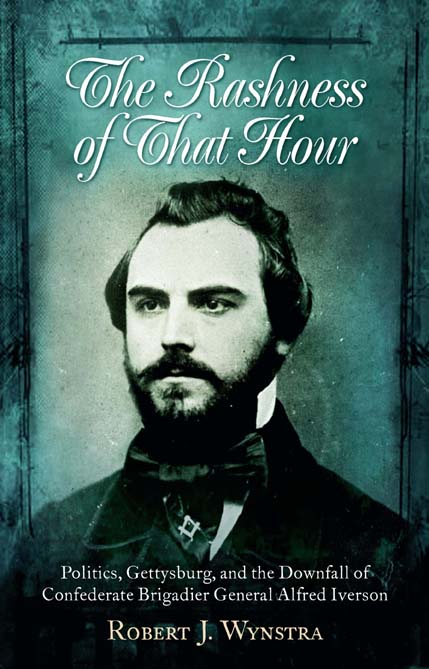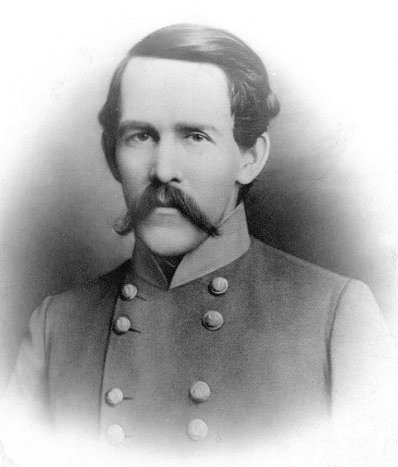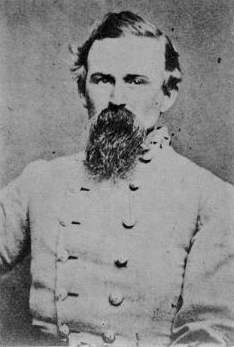The Rashness of that Hour: Politics, Gettysburg, and the Downfall of Confederate General Alfred Iverson
Review: Wynstra, Robert, J. The Rashness of that Hour, Politics, Gettysburg, and the Downfall of Confederate Brigadier General Alfred Iverson. Savas Beatie LLC; El Dorado Hills, CA, 2010. Pp. X, 408. ISBN 978-1-93271-88-3. Hardcover. $32.95.
On July 1, 1863, the Battle of Gettysburg started when elements of both the Confederate and Union armies bumped into each other to the west of town. As the battle escalated between the Confederate Third Corps commanded by General A.P. Hill and the cavalry division of John Buford, reinforcements arrived for both sides. For the Union, General John Reynolds’s First Corps and later General Oliver Howard’s Eleventh Corps extended the Union defense to the south and north of the town respectively. For the Confederates, General Richard Ewell’s Second Corps arrived and would square off against the Union Eleventh Corps north of Gettysburg.
In that ensuing portion of the battle, a brigade of North Carolinians, commanded by a native Georgian would deploy for battle, forget to order out skirmishers and begin in formation across the fields. Hidden in a swale was a Union brigade commanded by General Henry Baxter and what ensued in that hour—the rashness of that particular Georgia-born Confederate general would have lasting implications—and unfortunately for hundreds of North Carolinians, their last charge. Click here for a map.
Alfred Iverson, the Georgian brigadier general, according to historian Robert Wynstra, in his opening line “suffered more damage to his reputation” than any other commander at Gettysburg (XIII). In that one hour, his command suffered over 860 men killed, wounded, and/or captured out of 1,238 engaged, a 65% casualty rate (XV). What ensued was rumors and allegations that Iverson was a drunk and/or a coward soon surfaced and less than week after the end of the battle, Iverson was stripped of his command by his division commander, General Robert Rodes.

Wynstra views the months of internal feuding and political maneuverings, the survivors had no doubt where the fault laid and they placed it on the failed leadership displayed by the commanding general. However, Wynstra wants to delve deeper and try to answer the lingering question of “how such a thing could have happened at all” (XVI).
The book begins with examining the pre-war life of Alfred Iverson and although not a West Point graduate, but using political maneuverings of his well-connected father, did become commissioned in the U.S. cavalry. Resigning his commission on March 21, 1861 he was commissioned a captain in the Confederate States Provisional Army and assigned to recruiting duties in North Carolina (15). After service in North Carolina, the 20th North Carolina, with the now Colonel Alfred Iverson was called to join the Army of Northern Virginia and arrived in Virginia on June 16, 1862. They were part of General Samuel Garland, Jr’s brigade and fought during the Seven Days’ Battles. During the fighting at Gaines Mill was wounded in the hip which required convalescence in North Carolina and he would be out until the end of August from duty.
He returned in time to fight during the Antietam Campaign, where Garland was killed during the Battle of South Mountain. This resulted in the beginnings of the squabbles about who should take over command of the all-North Carolina brigade. When Iverson, a Georgian was picked over Colonel Duncan McRae of the 5th North Carolina, a fellow officer within the brigade, many of the men saw his “selection over..other qualified Tar Heel officers..as a major affront to their honor and state pride” (47).
Iverson “compounded the problems” by retaining most of the officers that had staffed the brigade under Garland’s command and most of them were Virginian by birth (47). Only one North Carolinian was on the staff, which further fueled “the growing discontent over the selection of a Georgian to head the brigade” (48). It was not long until soldiers in the ranks began writing home about their wounded state pride and these letters soon made their way into publications and to the desk of the governor of North Carolina; Zebulon Vance. There was even a push by the two North Carolina senators in Richmond to get Iverson’s commission to brigadier general and control of the brigade blocked by the Senate-but to no avail.
With all this swirling around, Iverson was seen by top generals to have lost control of the situation in his brigade—with acts of insubordination, resignations, and the mood and displeasure of the rank and file made public. Fighting in December, at the Battle of Fredericksburg, where Iverson’s brigade had a supporting role led five months later to an accusation that during the fighting on May 3, 1863, he led his men from the rear and thus shirked his duties, and was thought of as a coward. A fellow brigadier general, Stephen Ramseur (and another native North Carolinian) also heard these reports and believed that “charges will be preferred against him” (113). Battle was usually a good way to win over the trust of the men under your command, but Iverson’s conduct of commanding from the rear, led the gulf being created between his command and him to widen further.

On the eve of the campaign that culminated with the Battle of Gettysburg, Iverson was again the target of his soldiers’ ill will. Rumors spread that Iverson had turned down the chance for them to return home because he feared their loyalty (123). Although Iverson’s brigade was never considered to be transferred, this did not stop the animosity from growing toward the brigade commander.
Wynstra continues his narrative with a primary source driven account of the march of Iverson’s brigade toward the eventual Battle of Gettysburg. As the battle unfolds on July 1st, Wynstra brings up the interesting point of the choice of Edward O’Neal’s brigade to launch its assault on what would become the left flank of Iverson’s assault that Rodes delivered the order himself rather than relying on a staff officer (217). The problems O’Neal encountered should have served as a warning to Rodes and subsequently Iverson, but unfortunately, it did not. Besides an ill omen of what was in store for Iverson’s brigade, the orders for the day, according to Wynstra’s research, was “not well spelled out or understood” (225). After Iverson received “some clarification” to “advance to meet the enemy, who were approaching the battery” Iverson prepared his brigade to advance (225). Than Iverson’s men go forward and Iverson ceases to be, it seems, any influence in the ensuing attack disappearing from the text besides providing his name for clarification to what brigade was being chewed up.
Wynstra than unfolds a great dissection of the attack and repulse of Iverson’s brigade, which had already been uncovered earlier in this review. This covers the rest of the action of Rodes’ division and subsequently Ewell’s corps.
Iverson’s brigade did participate in the night attack the following day, July 2, 1863 and again Iverson’s North Carolinians advanced toward the blue lines, but luckily the strength of the Union position, the lateness of the hour, and an assessment done by Ramseur was enough to stop the attack. Iverson’s role, according to Wynstra, “remains unclear” and Ramseur seems to have ignored him and that only General Doles was consulted from the division (279). Even, Iverson’s official version of events does not claim any involvement in the decision making (279).
Even before the battle had ended, the men of the brigade knew who to blame. The mortally wounded Colonel Daniel Christie, summing up what strength he still had, he summoned the survivors of his regiment, the 23rdNorth Carolina, and proclaimed “with much feeling” that “he might not live to again lead them in battle but he would see that the ‘imbecile Iverson never should” (297). This feeling was almost universal, as Iverson, who gain remained in the rear during the charge, was the basis for criticism and rebuke. One soldier stated that Iverson’s role began and ended with the order to move forward and “Give them hell” (298). Even Ewell’s stepson and aide, Major Campbell Brown wrote privately that “the well-known cowardly behavior of Iverson” and he credited as his sources what he heard from Generals Daniel and Rodes (298).

According to Wynstra, Iverson’s fate with his brigade and hence with the Army of Northern Virginia had been sealed, even though he served in “a prompt manner” during the affair at Hagerstown (321). This became official on July 10th when General Lee issued an order relieving him from command and he was directly assigned as provost marshal of Williamsport, Maryland, but no official reason was ever given (321).
During the rest of the war Iverson was given a myriad of assignments, from a caretaker command with a Louisiana brigade in the Army of Northern Virginia in the fall of 1863, home guard command in Georgia for state forces, then command in the cavalry during the campaigns in the western theater in the summer of 1864, and ended with command of a prisoner-of-war encampment in Florence, South Carolina. He refused to take the oath of allegiance at the end of hostilities and initially settled into life around Macon, Georgia. He eventually remarried (his first wife had died before the Civil War), and repaired his relationship with his two daughters from the first marriage whom had been raised by a sister-in-law (341-342). He even tried his hand at raising oranges in Florida, but died in his native Georgia in Atlanta on March 31, 1911.
This history is a valuable account to understanding much bigger themes that were prevalent during the American Civil War. From states’ rights and the intrigues of the Confederacy with commands chafing under the control of generals from other states, to the honor and command style of a Southern leader (from the front, not the rear), to the disaster of Gettysburg for the Confederacy, this book touches them all through the Confederate military career of Alfred Iverson. Wynstra weaves theses themes into a well-written and very interesting book while keeping his personal opinion of the fate of Iverson in check—which allows the reader to form their own opinions, which is refreshing from a reader standpoint.
His aim was to try and understand what happened on that fateful July 1st day. After compiling great evidence from a bevy of primary and secondary sources, he places that in front of the reader to allow them to make their own judgment about Iverson and the circumstances therein. A great read and a must read for any Gettysburg buff.
Thanks for the nice review. I’m glad you enjoyed the book and really appreciate your comments.
Thank you for mentioning our book, The Rashness of That Hour. If your readers would like more information about the book, including an excerpt, or its author, please check at http://tinyurl.com/24nuw2u. This book has won several awards including:
– 2010, Dr. James I. Robertson Literary Prize for Confederate History Award
– 2011, The Bachelder-Coddington Literary Award, Given by the Robert E. Lee Civil War Round Table of Central New Jersey
– 2011, Gettysburg Civil War Round Table Book Award
Savas Beatie also offers copies of the book with a signed author bookplate.
Savas Beatie LLC
Publisher of Historical Titles of Distinction
http://www.savasbeatie.com
http://www.facebook.com/savasbeatie
Iverson’s prickly and peevish temperament, his lack of any interpersonal skills, and his not being (how shall I say?) possessed of combat courage, all combined to lead to that horrible carnage on July 1, 1863 in Forney’s Field. A very well written and researched book!
Thank you for this book i’ve been waiting for a good read on this incident for a long while .heading out to buy now .
Seems that General Rodes gets a pass on the attack on the first day at Gettysburg. Iverson has some big faults, but could any general have done better with that attack? After O’Neal’s brigade getting pummeled, everyone could tell there was a lot of Federals down there, so why send Iverson and Daniel in? Is Picketts Charge his fault or General Lee’s? I think Iverson was not a capable leader, but he was kept in command. I think General Rodes slipped out of being the main bungler here, although he was sure good at other battles